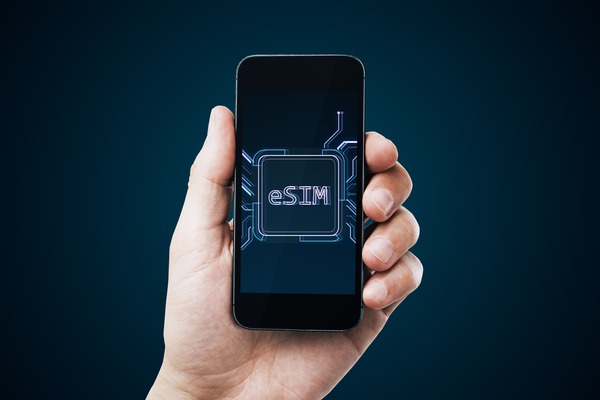Notifications
ALL BUSINESS
COMIDA
DIRECTORIES
ENTERTAINMENT
FINER THINGS
HEALTH
MARKETPLACE
MEMBER's ONLY
MONEY MATTER$
MOTIVATIONAL
NEWS & WEATHER
TECHNOLOGIA
TV NETWORKS
VIDEOS
VOTE USA 2026/2028
INVESTOR RELATIONS
COMING 2026 / 2027
ALL BUSINESS
COMIDA
DIRECTORIES
ENTERTAINMENT
FINER THINGS
HEALTH
MARKETPLACE
MEMBER's ONLY
MONEY MATTER$
MOTIVATIONAL
NEWS & WEATHER
TECHNOLOGIA
TV NETWORKS
VIDEOS
VOTE USA 2026/2028
INVESTOR RELATIONS
COMING 2026 / 2027
About Me
 BAZTEL LTD
BAZTEL LTD BazTel brings hassle-free international connectivity through innovative eSIM technology. No more long queues for local SIMs or shocking roaming fees—just choose your destination, download your eSIM, and get connected. Whether for work or play, BazTel ensures you're always online, anytime, anywhere. Simple, fast, and reliable travel data.
 BAZTEL LTD -
May 7 -
Technology -
eSIM
esim card
what is esim
what is esim card
what is an esim
-
152 views -
0 Comments -
0 Likes -
0 Reviews
BAZTEL LTD -
May 7 -
Technology -
eSIM
esim card
what is esim
what is esim card
what is an esim
-
152 views -
0 Comments -
0 Likes -
0 Reviews

In recent years, the term “eSIM card” has been making waves in the technology and telecommunications industries. Mobile networks throughout the world are embracing eSIM technology while what constitutes an eSIM card remains unclear. An examination of eSIM technology follows with an analysis of how eSIM cards operate together with reasons for their rising popularity within consumer and network provider markets.
An eSIM refers to "embedded Subscriber Identity Module" as a digital SIM card which manufacturers install directly in devices. During production eSIMs receive permanent installation directly inside devices so they exist as an intrinsic part of hardware rather than removable physical SIM cards. The innovative design eradicates physical cards yet upholds the fundamental capabilities which standard SIMs provide.
Just as standard SIM cards do the eSIM functions fundamentally as a communication platform between devices and mobile networks. Users can establish mobile network connections while performing identity verification to access phone calls and texts and data services through this embedded feature. The eSIM contains digital information storage which operators can modify remotely without needing a removable chip.
The functionality of an eSIM revolves around remote provisioning. This means that mobile network operators can send the necessary configuration and activation details directly to the device over the air (OTA). Once these settings are received, the eSIM can be activated and associated with a specific mobile number and plan.
Key steps in how an eSIM works include:
Device Compatibility: Only eSIM-enabled devices can support this technology. Examples include certain models of smartphones, tablets, smartwatches, and laptops.
Remote Provisioning: The user scans a QR code provided by the mobile network operator or downloads a profile directly via an app or a URL.
Activation: The eSIM is activated with the user's chosen mobile plan, making it functional without any physical intervention.
Flexibility: Users can switch between profiles or even between carriers without needing to obtain a new physical SIM card.
The adoption of eSIM cards is driven by a myriad of benefits, both for consumers and mobile network operators. Below are some of the most notable advantages:
No Physical SIM Card: There’s no need to visit a store to obtain a SIM card or wait for one to arrive by mail. The entire process can be done digitally.
Seamless Switching: Users can switch carriers or plans almost instantaneously, making it easier for frequent travelers or those looking for the best deals.
Multi-Profile Capability: Some devices allow multiple eSIM profiles, enabling users to switch between personal and work numbers or local and international carriers with ease.
Compact Devices: Since eSIMs are embedded into the hardware, manufacturers can save space within devices, paving the way for slimmer designs or accommodating larger batteries.
Enhanced Durability: Without a physical SIM tray, devices become more resistant to water and dust.
Reduced Waste: eSIMs eliminate the need for plastic SIM cards, packaging, and logistics, contributing to a greener planet.
Tamper-Proof: eSIMs are embedded into the device, making them harder to remove or tamper with compared to physical SIM cards.
Remote Management: Lost or stolen devices can have their eSIM profiles remotely deactivated, enhancing security.
Mobile network operators are increasingly embracing eSIM technology due to its potential to streamline operations and enhance customer experience. Here are some key reasons:
By transitioning to eSIMs, networks can reduce costs associated with producing, distributing, and managing physical SIM cards.
Users experience effortless plan activation and switching through remote control capabilities. Higher customer satisfaction rates and retention figures result from the user-friendly nature of these offerings.
The benefits of eSIM technology become most pronounced in devices associated with the IoT (Internet of Things) including smart homes and automobiles alongside wearable electronics. Mobile network operators excel at managing service scalability for expanding numbers of connected devices.
For users who frequently travel internationally, eSIMs offer the convenience of switching to local networks without needing a new SIM card. This expands mobile operators’ reach to a global audience.
The worldwide shift toward compact connected devices matches perfectly with the evolutionary path of technological development through eSIM technology. The use of eSIM technology allows networks to compete effectively amid the rapid technological advancements of their industry.
Despite its many advantages, eSIM adoption isn’t without challenges. Here are some of the key concerns:
Not all devices support eSIM technology yet, which can limit its adoption among certain user groups.
Consumer adoption of eSIM technology requires education about the technology because most people remain unaware of its existence.
Mobile network operators need to invest in new infrastructure and systems to support eSIM provisioning, which can be costly in the short term.
Security advantages of eSIMs present worries for users who fear their remote provisioning systems could be hacked or mishandled.
Telecommunications regulations across different nations pose implementation and usage challenges for eSIM technology.
The versatility of eSIMs extends beyond smartphones. Here are some of the key areas where eSIM technology is making an impact:
Smartwatches and fitness trackers equipped with eSIMs can function independently of smartphones, enabling features like calling and data usage on the go.
From smart thermostats to connected cars, eSIMs are revolutionizing how devices connect and communicate in the IoT ecosystem.
eSIMs allow travelers to switch to local carriers without needing a new SIM card, reducing roaming charges and improving convenience.
Companies can use eSIMs to manage fleets of devices, ensuring seamless connectivity for employees across locations.
The rapid expansion of eSIM technology adoption appears certain for future years. Major manufacturers alongside mobile networks' backing of eSIM technology indicates physical SIM cards will likely be completely replaced by eSIMs in the future.
Eastern SIM technology will become fundamental for digital communication transformation as device support increases alongside user experience improvements. The ongoing transition toward eSIMs promises to transform the way we connect technology giving them a key role in defining technological growth.
Understanding "what is eSIM card" is key to appreciating its role in modern telecommunications. eSIM technology brings vital advances that provide users with unmatched user convenience alongside high flexibility and extensive scalability options. This technology features substantial gains that support its adoption by users and telco companies despite ongoing implementation difficulties.
The advancing world depends on eSIMs to pioneer an innovative path toward efficient device connectivity and complete network interactions.
